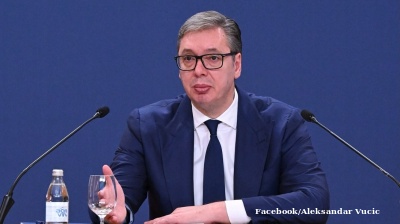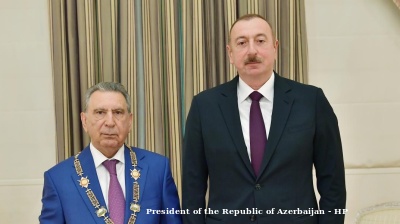The Middle Corridor linking China to Europe through the South Caucasus and Central Asia has expanded significantly in the aftermath of Russia’s invasion of Ukraine, but its long-term prospects remain uncertain, according to Emil Avdaliani, professor of international relations at the European University in Tbilisi, in a recent paper for the Central Asia-Caucasus Institute.
“The Middle Corridor has seen important development,” said Avdaliani. “But its rapid expansion is hampered by geographical obstacles and the political intricacies that characterise much of the route.”
The Middle Corridor – also known as the Trans-Caspian Transport Corridor – extends from the Black Sea to western China via Georgia, Azerbaijan, the Caspian Sea and Central Asia. While the route has existed in various forms since the 1990s, it gained renewed attention after 2022 as sanctions and instability made the Northern Corridor through Russia increasingly problematic for EU–China trade.
“Infrastructure gaps, the corridor’s multimodal nature, and regional instability have all contributed to its limited use,” Avdaliani explained. “Before 2022, only around 2-3% of overland freight moved along the Middle Corridor.”
That share has grown. In 2024, Kazakhstan reported a 63% increase in freight volume along the corridor, reaching 4.1mn tonnes. Azerbaijan’s authorities cited a 5.7% increase to 18.5mn tonnes, while Turkish and Georgian railways also recorded rises. Kazakhstan announced plans to fund a new terminal at Azerbaijan’s Alat port and expand Aktau port’s container throughput capacity by 2030.
At the regional level, efforts to formalise cooperation have intensified. In March, Azerbaijan hosted the General Assembly of the Trans-Caspian International Transport Route International Association, aiming to raise volumes to 96,000 twenty-foot equivalent units (TEUs).
“The growing interest from both the EU and China is unmistakable,” said Avdaliani. “In April, the EU pledged €12bn, including €3bn for transport, through its Global Gateway initiative – its answer to China’s Belt and Road.”
China, for its part, has resumed support for Georgia’s Anaklia deep-sea port and strengthened ties with Azerbaijan, most recently upgrading a strategic partnership on April 23. “These developments point to a near-continuous corridor from China’s western regions to the Black Sea,” Avdaliani noted.
Still, the northern route has not disappeared. Trade volumes along the Russian corridor have fluctuated but remained substantial between 2022 and 2024. “Despite sanctions, the Russian route continues to function and could rebound strongly if Moscow and Washington reconcile or if Russia ends the war in Ukraine favourably,” said Avdaliani.
Such a scenario could undermine the Middle Corridor, particularly if Russia regains political leverage in the South Caucasus. “A reinvigorated Russia might use both military and economic tools to constrain the corridor’s development,” Avdaliani warned.
While estimates suggest the Middle Corridor could eventually carry up to 20% of overland China-EU freight, realising that goal depends on completed infrastructure, reduced regional tensions and sustained multilateral cooperation.
“It will keep growing, but always as a complement to the Northern Corridor – not a replacement,” said Avdaliani.
Opinion

Western Balkan countries become emerging players in Europe’s defence efforts
The Western Balkans could play an increasingly important role in strengthening Europe’s security architecture, says a new report from the Carnegie Europe think-tank.

COMMENT: Sanctions on Rosneft and Lukoil are symbolic and won’t stop its oil exports
The Trump administration’s sanctions on Russian oil giants Rosneft and Lukoil, announced on October 22, may appear decisive at first glance, but they are not going to make a material difference to Russia’s export of oil, says Sergey Vakulenko.

Armenia’s painful reorientation toward the West
Yerevan’s drive to break free from its dependency on Moscow is generating profound internal political turbulence and exposing it to new external risks, says a report by the Central Asia‑Caucasus Institute & Silk Road Studies Program.

COMMENT: Europe’s “fake it till you make it” war approach cannot hold off Russia’s trillion dollar war machine
In their speeches on the war in Ukraine, European leaders appear like a video clip looped on repeat. Standing before the cameras they declare new packages of support for Kyiv and threaten new measures to pressure Russia as if it was still 2022.



_seen_here_meeting_with_Congressman_Jimmy_Panetta_201025_Cropped_1760946356.jpg)
